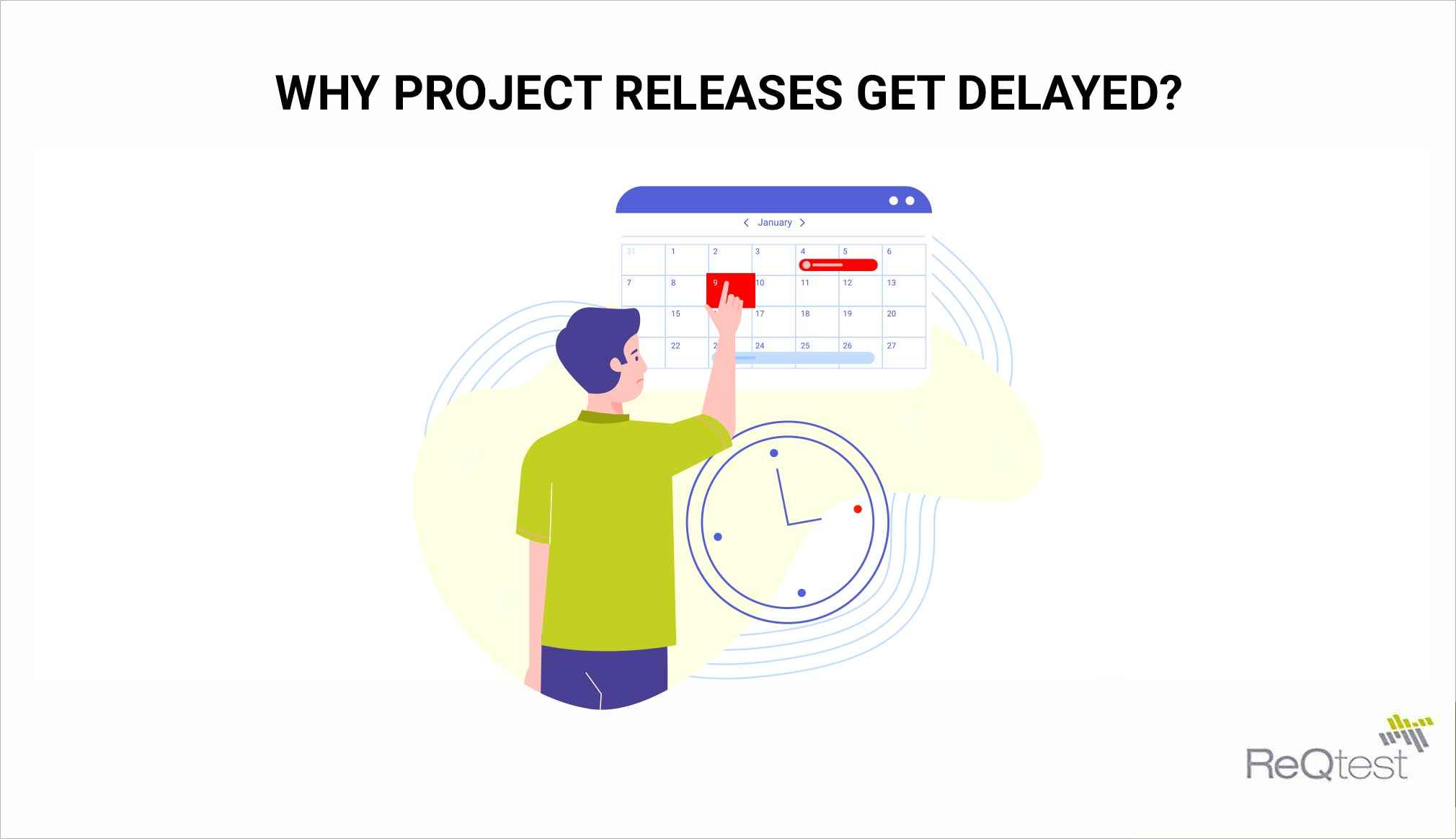September 28, 2020
Understand The Quality Before Pushing Or Delaying A Release
Software quality has many different dimensions to it. Before releasing your product, it is critical to understand the concept of quality, and you need to have a checklist to meet the ‘high quality’ standard.
All software has requirements that need to be met. However, a product of higher quality should achieve more than just meeting a set of requirements. There are other factors to focus on, such as user experience and expectations.
Often, a release may get delayed due to quality issues. Let us understand which requirements and expectations should be met before rolling out new software.
Why Project Releases Get Delayed?
During project developments, release delays are often a reality. The delays can be frustrating for all involved in software development although the extra time required is often necessary to meet all requirements and quality checks. There are several reasons for a project release to get delayed.

Here are some of the main reasons:
Gold plating
Often developers put too much effort into the software design or details. It can lead to software that becomes overly elaborate. It can waste a lot of time by adding and working on unnecessary details.
Continuous Expansions
Known as the expansion of functionality, this is when new functionalities and requirements arise as the development progresses. It can lead to a never-ending chain of software development that keeps on expanding from the previous point.
Insufficient Timelines
Project managers and developers can often be overly optimistic when it comes to releasing dates. Sometimes they do not realize just how much input a project needs for the successful completion of a product or software.
Having unrealistic schedules can put unnecessary pressure on the development team. It can either result in a rushed job (leading to errors along the way) or in a delayed-release.
Quality Control
When a project manager lacks sufficient quality control, it can lead to many issues in the software. It will result in the development team having to go back and try to fix these bugs. A high level of quality control along the way will result in a smoother development.
Not Understanding Expectations
Developers may be able to create efficient software, but this is not always what is ultimately needed.
At times, specific customer requirements and expectations may get overlooked. It is always essential to understand the needs of the end-user to create software that doesn’t require much revision.
These are just a few reasons that could cause project delays. Ultimately, each reason results in a low standard of quality – something that always needs improvement before the release.
The Impact Of Quality Assurance/Control
Quality assurance is vital for any development project. The main goal is to end up with a high-quality software product. Maintaining a good level of quality control can result in several benefits for the business.
Of course, keeping a high level of quality will help to meet the client’s expectations and requirements. But, some other main benefits around quality assurance can include:
- Reducing bugs or errors in the software
- Improving the end-user experience
- Making the development process more efficient
- Reducing the number of wasted resources during development
- Creating software that will provide a brand name for the development team/company
Why do You need To Understand The Quality Before You Delay Your Release?
Before implementing or changing release dates, understanding quality and its control are essential.
Here are some factors around this:
Cost
Fixing issues in quality can be time-consuming, not to mention expensive. You need to understand the quality expectations of a project from the offset to make sure that you meet all requirements before the release date. Fixing issues of low quality can involve many steps and result in being an expensive process.
Developing software properly the first time is quicker. It will result in fewer expenses during the process. So, control quality during the development, and the overall costs of your project will be lower.
Customer Satisfaction
Quality is not just about meeting project requirements. It also includes making sure that the product adds a level of value and satisfaction to the end-user.
The software can technically tick all the right boxes, but might not meet the functional needs of the user. It will result in low customer satisfaction and may mean going back to the drawing board.
Launching test versions of the software for the user to trial is a must pre-release step. It can avoid a lengthy (and expensive) redevelopment of the product.
Stakeholders Requirements
Customer satisfaction is not just for end-user. The needs of the stakeholders, or internal customers, should also be met. The software should never go in production if it is not of a high enough quality enough to satisfy the stakeholders, as well as the end-user.
Value To The Future
Software projects often involve updates or newer versions. Increasing the level of quality on the initial product can help to avoid quality problems for future versions. It will also make future developments easier, more efficient, and more budget-friendly.
Having high quality from the start will also result in a more confident development team. It will mean boosted team spirit and increased motivation to work on future projects.
Less Waste
Understanding the quality requirements of the software will mean that the development team will spend less time on unnecessary features and focuses.
Resources developing software mainly include time and finances. You can save on both of these significantly by ensuring that the quality is the focus from the beginning.
Final Thoughts
Quality is a factor to consider when developing software. However, many project managers and development teams struggle to understand what the quality requirements and expectations are. Understanding quality is essential before pushing the release of the software.
Having release dates and deadlines is needed for everyone involved in the development. So before delaying a release, everyone must understand what is expected.
Share article